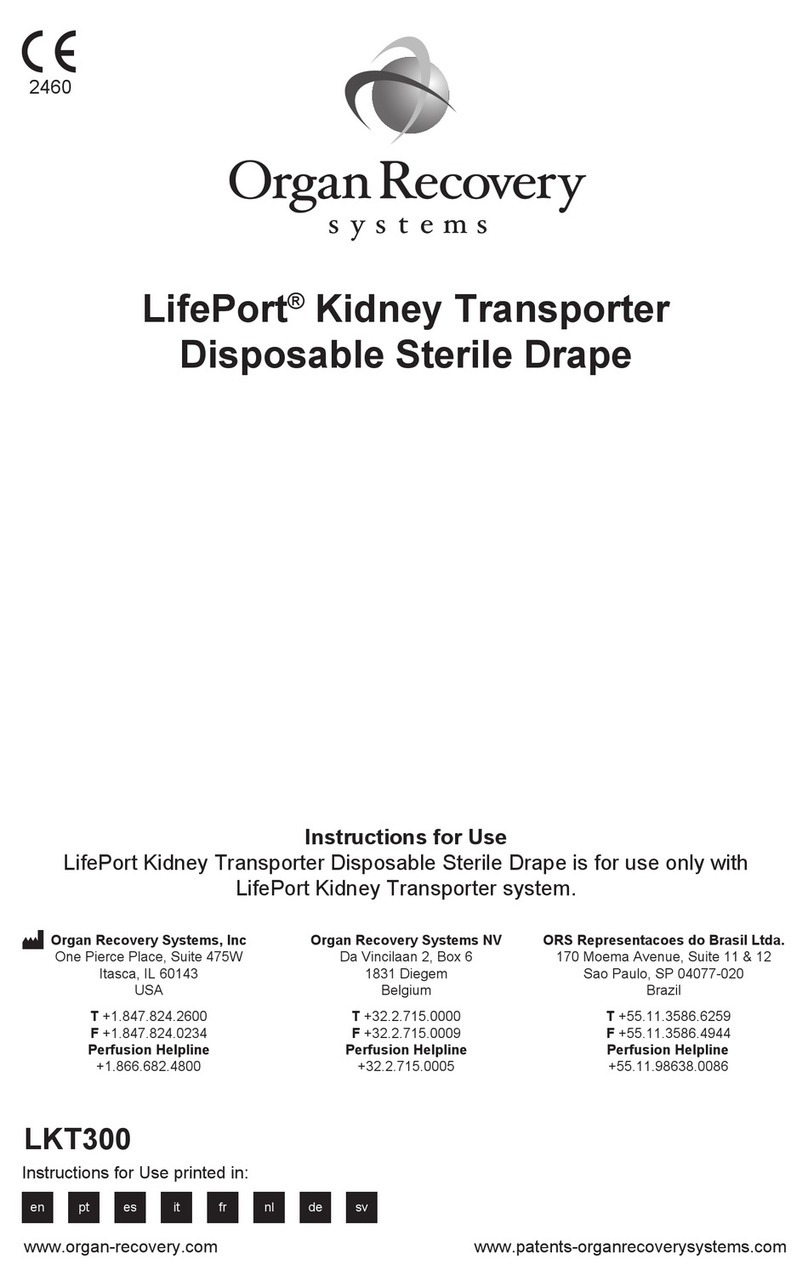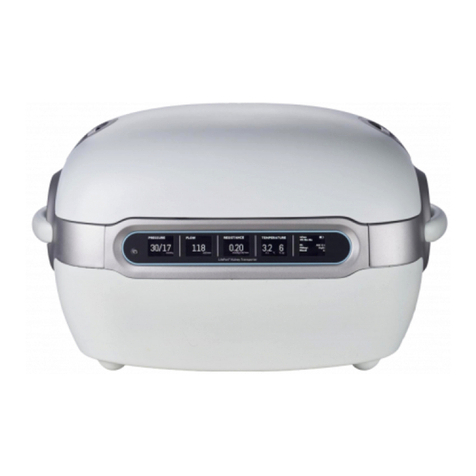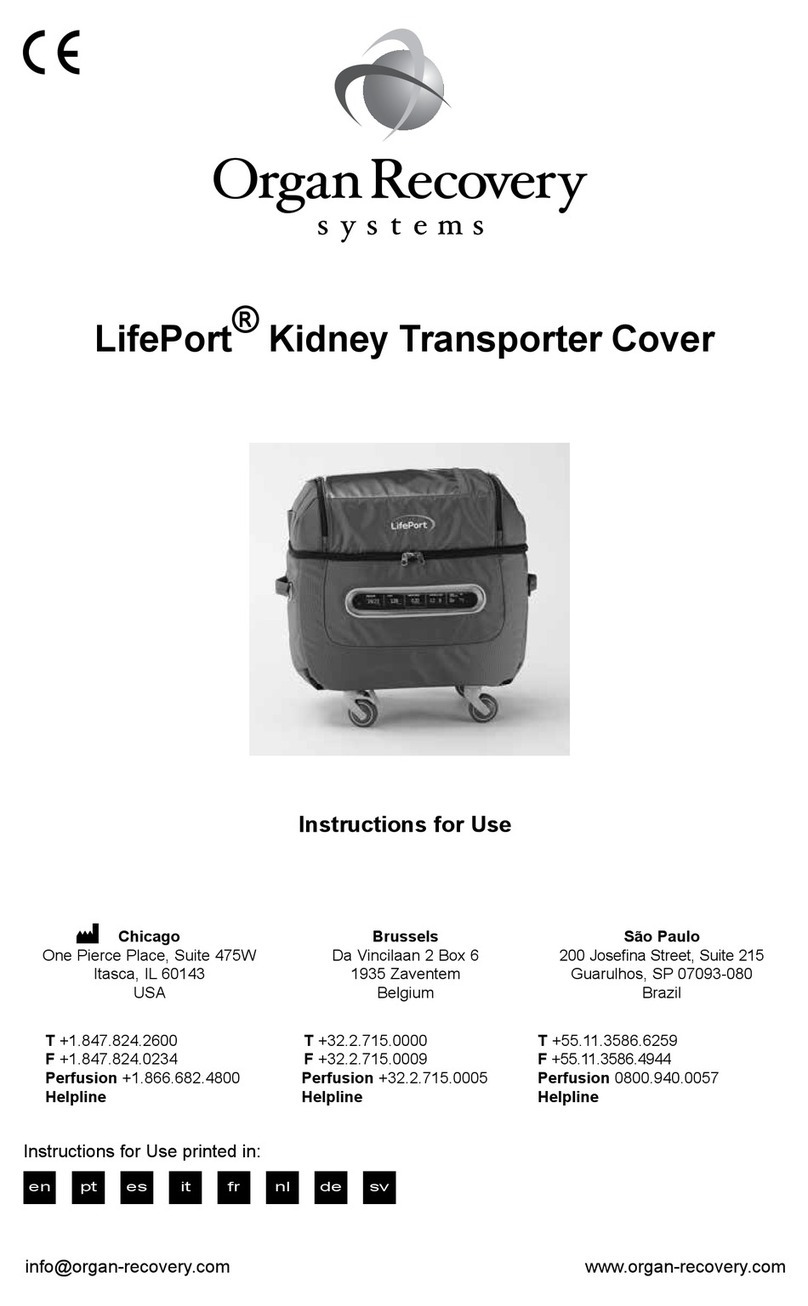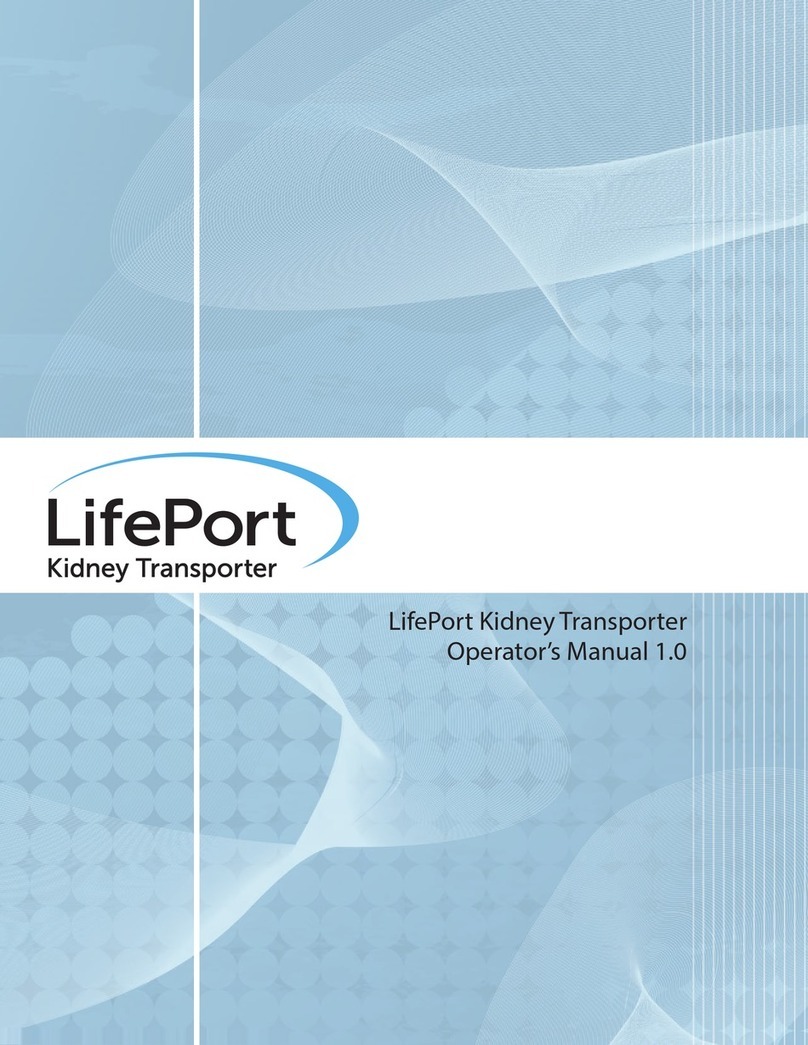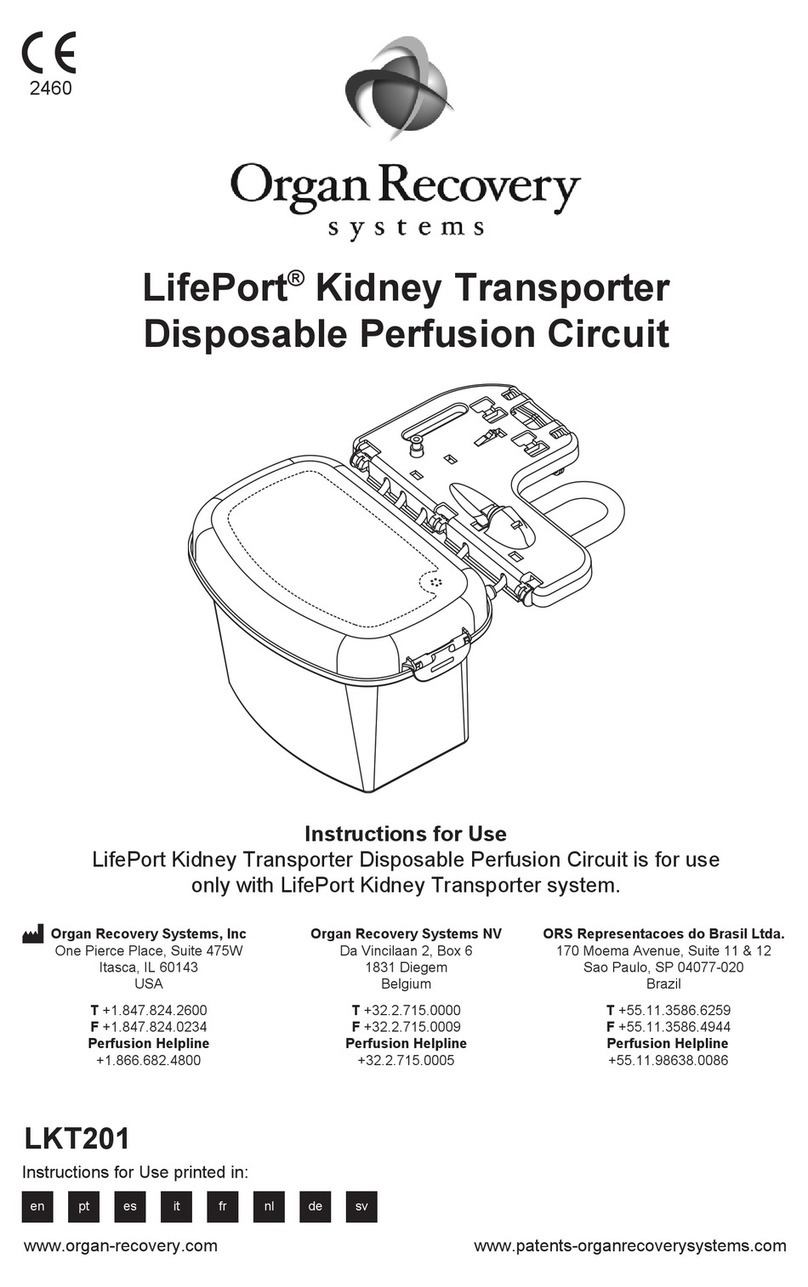
755-00002 Rev K LifePort Kidney Transporter Operator’s Manual 5
Testing the Batteries…………………………………………………………………………………………………..20
Checking Duration of Operation (Optional)…………………………………………………………………………20
Entering Device Information………………………………………………………………………………………….20
External Communications using Data Station………………………………………………………………………20
GPS/GPRS Tracking Capability……………………………………………………………………………………...21
Cleaning Up and Review after Use …………………………………………………………………………………21
Using LifePort Kidney Transporter
Introduction…………………………………………………………………………………………………………….22
Professional Overview………………………………………………………………………………………………..22
Maintaining LifePort Kidney Transporter for Quick Response Use………………………………………………22
Preparing the Home Base Station……………………………………………………………………………….22
Preparing LifePort Kidney Transporter for Recovery………………………………………………………………23
Cooling Down LifePort Kidney Transporter……………………………………………………………………..23
Traveling with LifePort Kidney Transporter and Supplies……………………………………………………..23
Setting Up the Disposable Kidney Perfusion Circuit…………………………………………………………...24
Isolating the Kidney Vascular Structure……………………………………………………………………………..27
Cannulating the Kidney……………………………………………………………………………………………….28
Using the Disposable Kidney SealRing®cannula……..……………………………………………………….28
Using the Disposable Kidney Straight cannula…………………………………………………………………29
Using the Disposable Kidney Coupler…………………………………………………………………………...30
Using the Disposable Kidney Universal SealRing®cannula…..………………………………………………32
Placing the Kidney in LifePort Kidney Transporter…………………………………………………………………34
Entering ORGAN ID Information…………………………………………………………………………………34
Placing the Kidney…………………………………………………………………………………………………35
Priming the Infuse Line…………………………………………………………………………………………...36
Preliminary Testing for Leaks…………………………………………………………………………………….37
Initiating Perfusion…………………………………………………………………………………………………38
Checking the Kidney After Placement………………………………………………………………………………38
Visual Inspection…………………………………………………………………………………………………..38
Cannula Leakage?…………………………………………………………………………………………………38
Artery Filled?……………………………………………………………………………………………………….38
Side Branches Closed?……………………………………………………………………………………………39
Vein Positioned on Top?………………………………………………………………………………………….39
Presence of Blood or Perfusate?…………………………………………………………………………………39
Color of Kidney?……………………………………………………………………………………………………39
Closing LifePort Kidney Transporter…………………………………………………………………………………40
Monitoring Options for a Kidney on LifePort Kidney Trasporter………………………………………………….40
Monitoring Via LifePort Kidney Transporter Outer Display……………………………………………………41
Data Station Monitoring……………………………………………………………………………………………42
GPS/GPRS Tracking……………………………………………………………………………………………….42
Typical Behavior of a Kidney on LifePort Kidney Transporter………………………………………………...43
Leakage at Cannula or Open Side Branch………………………………………………………………….43
Nonresponding Kidney…………………………………………………………………………………..........43
Remote Monitoring…………………………………………………………………………………………………44
Preparing to Travel to the Transplant Site…………………………………………………………………………. 44
Transplant from the Recovery Site…………………………………………………………………………….. 44
Transport the LifePort Kidney Transporter and Supplies……………………………………………………..44
